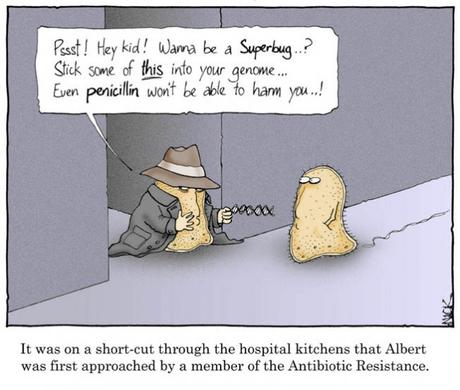 I wrote about the disaster-in-the-making discovery of transmissible resistance to colistin, a last resort antibiotic, when the Lancet Infectious Diseases published a paper based on data coming out from surveillance in China. At that point of time, the isolation of the transmissible gene providing resistance (mcr1 gene) gained a lot of attention. Maryn McKenna’s blog post went viral and there was a lot of tornadoes in Twitter. Unfortunately, that did not quite stall the relentless progress of the rise of antimicrobial resistance.
I wrote about the disaster-in-the-making discovery of transmissible resistance to colistin, a last resort antibiotic, when the Lancet Infectious Diseases published a paper based on data coming out from surveillance in China. At that point of time, the isolation of the transmissible gene providing resistance (mcr1 gene) gained a lot of attention. Maryn McKenna’s blog post went viral and there was a lot of tornadoes in Twitter. Unfortunately, that did not quite stall the relentless progress of the rise of antimicrobial resistance.
Yesterday, another correspondence article, published in the same journal, The Lancet Infectious Diseases, has rung the doorbell to the gateway of the post-antibiotic era: Laurent Poirel, Nicolas Keiffer, Nadia Liassine, Dang Thanh, and Patrice Nordmann have published a letter in the journal outlining the emergence of plasmid-mediated carbapenem and colistin resistance in a clinical isolate of the dreaded bug, Escherichia coli. This uropathogenic strain of E coli was recovered from the urine of an 83 year old man who was admitted to a hospital in Switzerland for diverticulitis. He suffered from renal insufficiency, necessitating the institution of regular dialysis. The authors describe the horrifying sensitivity profile of the strain isolated from the urine of the patient in a typically cold, sciencey, matter of fact manner when they state:
E coli isolate KRI was resistant to most β-lactams (remaining susceptible to aztreonam) and resistant or of intermediate susceptibility to carbapenems (minimum inhibitory concentrations were 4 μg/mL for imipenem, 4 μg/mL for ertapenem, and 2 μg/mL for meropenem).2 This isolate was also resistant to chloramphenicol, gentamicin, kanamycin, tobramycin, sulfonamides, tetracycline, co-trimoxazole, and fluoroquinolones, remaining susceptible only to amikacin, tigecycline, and fosfomycin. Noteworthy, it was resistant to colistin, with a minimum inhibitory concentration of 4 μg/mL.
Though the authors could not identify the source of the strain definitively, their conjecture is that it could be from an animal source owing to the extensive use of polymyxins in food animals.
The emergence of combined resistance against carbapenems and colistin is indeed concerning, and what is more worrisome is that there does not seem to be the sense of urgency in policy makers in addressing this matter. Unfortunately, bacterial genes percolate through international borders with ease, and in this era of globalization, industrialization and global travel, there is no way in which we can tighten the already porous borders. So, until a comprehensive, global, regional, national and local action plan is enacted to combat this rising menace, the problem will continue to grow unabated.

References:
 1. Poirel, L., Kieffer, N., Liassine, N., Thanh, D., & Nordmann, P. (2016). Plasmid-mediated carbapenem and colistin resistance in a clinical isolate of Escherichia coli The Lancet Infectious Diseases DOI: 10.1016/S1473-3099(16)00006-2
1. Poirel, L., Kieffer, N., Liassine, N., Thanh, D., & Nordmann, P. (2016). Plasmid-mediated carbapenem and colistin resistance in a clinical isolate of Escherichia coli The Lancet Infectious Diseases DOI: 10.1016/S1473-3099(16)00006-2
